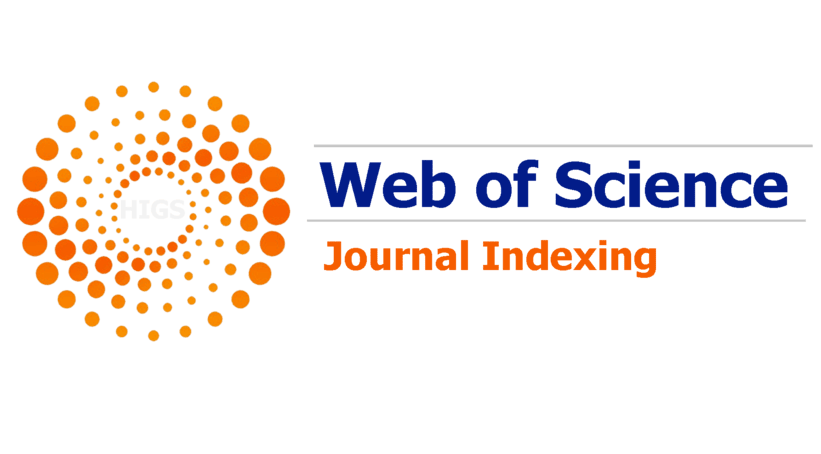Dinâmica espaçotemporal de larvas e juvenis de interesse para a pesca em Itaipu: Um grande reservatório neotropical
DOI:
https://doi.org/10.20950/1678-2305/bip.2024.51.e923Palavras-chave:
Ictioplâncton, Reservatório de Itaipu, Plagioscion squamosissimus, Hypophthalmus oremaculatusResumo
A corvina (Plagioscion squamosissimus) e o mapará (Hypophthalmus oremaculatus) estão entre as espécies de peixes mais exploradas na região do reservatório de Itaipu, no entanto as informações sobre a ecologia e a dinâmica dos seus estágios iniciais de desenvolvimento permanecem escassas. Os objetivos deste estudo foram avaliar a ocorrência espaçotemporal de larvas e juvenis dessas espécies em cinco braços do reservatório de Itaipu, determinar o período de pico da atividade reprodutiva, identificar locais de desova e desenvolvimento inicial e avaliar os efeitos ambientais na abundância larval. Amostras mensais foram coletadas de outubro a março entre 2009 e 2018 em cinco braços localizados na margem esquerda do reservatório em pontos amostrais distribuídos nas zonas lacustre, de transição e fluvial de cada braço. Os resultados mostraram que a atividade reprodutiva de P. squamosissimus atinge o pico entre janeiro e março, enquanto a de H. oremaculatus entre outubro e janeiro. Entre todas as variáveis físicas e químicas abordadas, embora relevantes no processo de reprodução dos peixes, somente a temperatura e a pluviosidade tiveram o efeito mais forte na abundância larval. A maior densidade larval de ambas as espécies foi encontrada na zona lacustre em todos os braços analisados, indicando que essa zona é utilizada como local de desova e desenvolvimento inicial, sendo, portanto, área prioritária para a conservação das espécies.
Referências
Abujanra, F., & Agostinho, A. A. (2002). Diet of Hypophthalmus edentatus (Spix, 1829) (Osteichthyes, Hypophythalmidae) and variations in its stock in Itaipu Reservoir. Acta Scientiarum, 24(2), 401-410.
Agostinho, A. A., Benedito-Cecilio, E., Gomes, L. C., & Sampaio, A. A. (1994). Spatial and temporal distribution of sardela, Hypophthalmus edentatus (Pisces, Siluroidei), in the area of influence of the Itaipu reservoir (Paraná, Brazil). Revista Unimar, 16(3), 27-40.
Agostinho, A. A., Gomes, L. C., & Pelicice, F. M. (2007). Ecologia e manejo de recursos pesqueiros em reservatórios do Brasil. EDUEM.
Agostinho, A. A., Gomes, L. C., Santos, N. C., Ortega, J. C., & Pelicice, F. M. (2016). Fish assemblages in Neotropical reservoirs: Colonization patterns, impacts and management. Fisheries Research, 173(Part 1), 26-36. https://doi.org/10.1016/j.fishres.2015.04.006
Agostinho, A. A., Pelicice, F. M., & Gomes, L. C. (2008). Dams and the fish fauna of the Neotropical region: impacts and management related to diversity and fisheries. Brazilian Journal of Biology, 68(4 Suppl.), 1119-1132. https://doi.org/10.1590/S1519-69842008000500019
Águas Paraná. Portal. Águas Paraná. Retrieved from http:// www.sih-web.aguasparana.pr.gov.br/sih-web
Ahlstrom, E. H., Butler, J. L., & Sumida, B. Y. (1976). Pelagic stromateoid fishes (Pisces, Perciformes) of the eastern Pacific: kinds, distributions, and early life histories and observations on five of these from the northwest Atlantic. Bulletin of Marine Science, 26(3), 285-402.
Akstinas, V., Virbickas, T., Meilutytė-Lukauskienė, D., Šarauskienė, D., Vezza, P., Kriaučiūnienė, J., Rakauskas, Y., Steponėnas, A., Jurgelėnaitė, A., Jakimavičius, D., & Nazarenko, S. (2024). Multicomponent assessment of the impact of hydropower cascade on fish metrics. Science of the Total Environment, 906, 167541. https://doi.org/10.1016/j.scitotenv.2023.167541
Ambrósio, A. M., Agostinho, A. A., Gomes, L. C., & Okada, E.K. (2001). The fishery and fishery yield of Hypophthalmus edentatus (Spix, 1829), (Siluriformes, Hypophthalmidae), in the Itaipu reservoir, Paraná state, Brazil. Acta Limnológica Brasiliensia, 13(1), 93-105.
Baumgartner, G., Nakatani, K., Gomes, L. C., Bialetzki, A., Sanches, P. V., & Makrakis, M. C. (2008). Fish larvae from the upper Paraná River: do abiotic factors affect larval density? Neotropical Ichthyology, 6(4), 551-558. https://doi.org/10.1590/S1679-62252008000400002
Baumgartner, M. S. T., Nakatini, K., Baumgartner, G., & Makrakis, M. C. (2003). Spatial and temporal distribution of ‘’curvina’’ larvae (Plagioscion squamosissimus HECKEL, 1840) and its relationship to some environmental variables in the upper Paraná River floodplain, Brazil. Brazilian Journal of Biology, 63(3), 381-391. https://doi.org/10.1590/S1519-69842003000300004
Bialetzki, A., Nakatani, K., Sanches, P. V., & Baumgartner, G. (2002). Spatial and temporal distribution of larvae and juveniles of Hoplias aff. malabaricus (Characiformes, Erythrinidae) in the upper Paraná River floodplain, Brazil. Brazilian Journal of Biology, 62(2), 211-222. https://doi.org/10.1590/S1519-69842002000200004
Bialetzki, A., Nakatani, K., Sanches, P. V., Baumgartner, G., & Gomes, L. C. (2005). Larval fish assemblage in the Baía River (Mato Grosso do Sul State, Brazil): temporal and spatial patterns. Environmental Biology of Fishes, 73, 37-47. https://doi.org/10.1007/s10641-004-3795-3
Bini, L. M., Thomaz, S. M., Murphy, K. J., & Camargo, A. F. (1999). Aquatic macrophyte distribution in relation to water and sediment conditions in the Itaipu Reservoir, Brazil. Hydrobiologia, 415, 147-154. https://doi.org/10.1023/A:1003856629837
Brito, M. F., Daga, V. S., & Vitule, J. R. (2020). Fisheries and biotic homogenization of freshwater fish in the Brazilian semiarid region. Hydrobiologia, 847(18), 3877-3895. https://doi.org/10.1007/s10750-020-04236-8
Carnelós, R. C., & Benedito-Cecilio, E. (2002). Reproductive strategies of Plagioscion squamosissimus Heckel, 1840 (Osteichthyes Sciaenidae) in the Itaipu Reservoir, Brazil. Brazilian Archives of Biology and Technology, 45(3), 317-324. https://doi.org/10.1590/S1516-89132002000300010
Casatti, L. (2003). Sciaenidae (Drums or croakers). In R. E. Reis, S. O. Kullander & C. J. Ferraris Jr. (eds.), Checklist of the freshwater fishes of South and Central America (pp. 599-602). EDIPUCRS.
Cintra, I. H. A., Pinheiro, J. D. R., Juras, A. A., Souza, R. F. C., & Ogawa, M. (2008). Biologia do mapará, Hypophthalmus marginatus (Valenciennes, 1840), no reservatório da Usina Hidrelétrica de Tucuruí (Pará-Brasil). Boletim Técnico-Científico do CEPNOR, 8(1), 83-95.
Conselho Nacional de Controle e Experimentação Animal (CONCEA) (2013). Diretrizes de prática de eutanásia do CONCEA. CONCEA. Retrieved from https://www.mctic.gov.br/mctic/export/sites/institucional/institucional/concea/arquivos/legislacao/resolucoes_normativas/Resolucao-Normativa-CONCEA-n-13-de-20.09.2013-D.O.U.-de-26.09.2012-Secao-I-Pag.-5.pdf
Costa, T. V., Oshiro, L. M. Y., & Soares, E. C. (2010). O potencial do mapará Hypophthalmus spp. (Osteichthyes, Siluriformes) como uma espécie alternativa para a piscicultura na Amazônia. Boletim do Instituto de Pesca, 36(3), 165-174.
Cutrim, L., & Batista, V. D. S. (2005). Age and growth of mapará (Hypophthalmus marginatus) in the Central Amazon. Acta Amazonica, 35(1), 85-92. https://doi.org/10.1590/S0044-59672005000100013
Dray, S., Legendre, P., & Blanchet, G. (2007). Packfor: Forward Selection with permutation (Canoco p. 46). R package version 0.0-7/r58. Retrieved from http://r-forge.r-project.org/R/?group_id=195
Ferreira, A., Paula, F. R., Barros Ferraz, S. F., Gerhard, P., Kashiwaqui, E. A., Cyrino, J. E., & Martinelli, L. A. (2011). Riparian coverage affects diets of characids in neotropical streams. Ecology of Freshwater Fish, 21(1), 12-22. https://doi.org/10.1111/j.1600-0633.2011.00518.x
Ferreira, L. C., Ponte, S. C. S., Silva, A. J. S., & Zacardi, D. M. (2016). Distribuição de larvas de Hypophthalmus (Pimelodidae, Siluriformes) e sua relação com os fatores ambientais no Baixo Amazonas, Pará. Revista Brasileira de Engenharia de Pesca, 9(2), 86-106. https://doi.org/10.18817/repesca.v9i2.1054
Genteline, A. L. (2018). Modelagem hidrodinâmica e definição da capacidade de suporte do rio São Francisco Verdadeiro tributário do reservatório de Itaipu (Doctoral thesis, Doctorate in Fisheries Resources and Fisheries Engineering, Universidade Estadual do Oeste do Paraná). https://tede.unioeste.br/handle/tede/5037
Gilbert, M. D., & Pease, A. A. (2019). Use of fragmented reservoir habitats by larval fish assemblages across years with contrasting hydrological conditions. Environmental Biology of Fishes, 102(6), 857-871. https://doi.org/10.1007/s10641-019-00875-6
Gogola, T. M., Daga, P. S., Gubiani, E. A., Silva, P. R. L., & Sanches, P. V. (2016). The role of submerged trees in the early development of fishes in a Neotropical reservoir. Journal of Fish Biology, 89(1), 355-368. https://doi.org/10.1111/jfb.12966
Gogola, T. M., Piana, P. A., Silva, P. R. L., Topan, D. A., & Sanches, P. V. (2022). Fish reproductive activity reveals temporal variations predominating spatial heterogeneity in maintaining high functional diversity of a Neotropical reservoir. Ecology of Freshwater Fish, 31(1), 154-163. https://doi.org/10.1111/eff.12621
Gogola, T. M., Silva, P. R. L., Maciel, A. L., Baumgartner, D., Piana, P. A., & Sanches, P. V. (2023). Fish functional biotic simplification in a Neotropical reservoir: An approach from the ichthyoplankton. Ecology of Freshwater Fish, 32(4), 874-885. https://doi.org/10.1111/eff.12729
Gomiero, L. M., & Braga, F. M. S. (2006). Diversidade da ictiofauna na Área de Proteção Ambiental das cuestas de São Pedro e Analândia (SP). Brazilian Journal of Biology, 66(1), 75-83. https://doi.org/10.1590/S1519-69842006000100010
Humphries, P., Serafini, L. G., & King, A. J. (2002). River regulation and fish larvae: variation through space and time. Freshwater Biology, 47(7), 1307-1331. https://doi.org/10.1046/j.1365-2427.2002.00871.x
Itaipu Binacional (2018). Monitoramento da Ictiofauna. Itaipu Binacional. Retrieved from https://www.itaipu.gov.br/meio-ambiente/monitoramento-da-ictiofauna
Keppeler, F. W., Andrade, M. C., Trindade, P. A., Sousa, L. M., Arantes, C. C., Winemiller, K. O., Jensen, O. P., & Giarrizzo, T. (2022). Early impacts of the largest Amazonian hydropower project on fish communities. Science of the Total Environment, 838(Part 2), 155951. https://doi.org/10.1016/j.scitotenv.2022.155951
Lechner, A., Keckeis, H., Schludermann, E., Humphries, P., McCasker, N., & Tritthart, M. (2014). Hydraulic forces impact larval fish drift in the free fowing section of a large European river. Ecohydrology, 7(2), 648-658. https://doi.org/10.1002/eco.1386
Littmann, M. W., Lundberg, J. G., & Rocha, M. S. (2021). Revision of the South American catfish genus Hypophthalmus (Siluriformes, Pimelodidae) with descriptions of two new species from the Amazon and Orinoco Basins. Proceedings of the Academy of Natural Sciences of Philadelphia, 167(1), 171-223. https://doi.org/10.1635/053.167.0112
Lopez-Femandez, H., & Winemiller, K. O. (2000). A review of Venezuelan species of Hypophthalmus (Siluriformes: Pimelodidae). Ichthyological Exploration of Freshwaters, 11(1), 35-46.
Machado, C. E. M. (1974). Ação da CESP no meio ambiente. Relatório interno. CESP.
Makrakis, M. C., Nakatani, K., Bialetzki, A., Sanches, P. V., Baumgartner, G., & Gomes, L. C. (2005). Ontogenetic shifts in digestive tract morphology and diet of fish larvae of the Itaipu Reservoir, Brazil. Environmental Biology of Fishes, 72(1), 99-107. https://doi.org/10.1007/s10641-004-6596-9
Matthews, W. J. (1998). Patterns in freshwater fish ecology. Chapman & Hall.
Melo-Silva, M., da Silva, J. C., & Bialetzki, A. (2022). Community structure of fish larvae in different biotopes of a neotropical river. Community Ecology, 23(1), 1-12. https://doi.org/10.1007/s42974-021-00066-3
Nakatani, K., Agostinho, A. A., Baumgartner, G., Bialetzki, A., Sanches, P. V., Makrakis, M. C., & Pavanelli, C. S. (2001). Ovos e larvas de peixes de água doce: desenvolvimento e manual de identificação. EDUEM.
Nakatani, K., Baumgartner, G., & Latini, J. D. (1998). Morphological description of larvae of the mapara Hypophthalmus edentatus (Spix) (Osteichthyes, Hypophthalmidae) in the Itaipu reservoir (Parana River, Brazil). Revista Brasileira de Zoologia, 15(3), 687-696. https://doi.org/10.1590/S0101-81751998000300013
Neves, M. P., Delariva, R. L., Guimarães, A. T. B., & Sanches, P. V. (2015). Carnivory during ontogeny of the Plagioscion squamosissimus: a successful non-native fish in a lentic environment of the Upper Paraná River Basin. PLoS One, 10(11), e0141651. https://doi.org/10.1371/journal.pone.0141651
Nomura, H. (1984). Dicionário dos peixes do Brasil. Editerra.
Nunn, A. D., Tewson, L. H., & Cowx, I. G. (2012). The foraging ecology of larval and juvenile fishes. Reviews in Fish Biology and Fisheries, 22(2), 377-408. https://doi.org/10.1007/s11160-011-9240-8
Oksanen, J., Blanchet, F. G., Friendly, M., Kindt, R., Legendre, P., McGlinn, D., Minchin, P. R., O’hara, R. B., Simpson, G. L., Solymos, P., Henry, M., Stevens, H., Szoecs, E., & Wagner, H. (2016). Vegan: community ecology package. R package version 2.4-0.
Oliveira, E. F., Goulart, E., & Minte-Vera, C. V. (2004). Diversidade de peixes ao longo de gradientes espaciais no reservatório de Itaipu, Paraná, Brasil. Brazilian Journal of Biology, 64(3), 447-458. https://doi.org/10.1590/S1519-69842004000300008
Operador Nacional do Sistema Elétrico (ONS). Portal. ONS. Retrieved from http://sdro.ons.org.br/SDRO/DIARIO/index.htm
Orlandi Neto, A., Caneppele, D., Marques, H., Dias, J. H. P., Balbuena, J. A., de Oliveira, C., & Ramos, I. P. (2024). Long-term impact of an invasive predator on the diversity of fish assemblages in a neotropical reservoir. Biological Invasions, 26, 1255-1267. https://doi.org/10.1007/s10530-023-03243-9
Ota, R. R., Deprá, G. D. C., Graça, W. J. D., & Pavanelli, C. S. (2018). Peixes da planície de inundação do alto rio Paraná e áreas adjacentes: revised, annotated and updated. Neotropical Ichthyology, 16(2), e170094. https://doi.org/10.1590/1982-0224-20170094
Pearson, K. (1901). LIII. On lines and planes of closest fit to systems of points in space. The London, Edinburgh, and Dublin Philosophical Magazine and Journal of Science, 2(11), 559-572. https://doi.org/10.1080/14786440109462720
Philippsen, J. S., Minte-Vera, C. V., Okada, E. K., Carvalho, A. R., & Angelini, R. (2016). Fishers’ and scientific histories: an example of consensus from an inland fishery. Marine and Freshwater Research, 68(5), 980-992. https://doi.org/10.1071/MF16053
Portinho, J. L., Perbiche‐Neves, G., & Nogueira, M. G. (2016). Zooplankton community and tributary effects in freeflowing section downstream a large tropical reservoir. International Review of Hydrobiology, 101(1-2), 48-56. https://doi.org/10.1002/iroh.201501798
Prchalová, M., Kubečka, J., Čech, M., Frouzová, J., Draštík, V., Hohausová, T., Jůza, M., Kratochvíl, M., Matěna, J., Peterka, J., Říha, M., Tušer, M., & Vašek, M. (2009). The effect of depth, distance from dam and habitat on spatial distribution of fish in an artificial reservoir. Ecology of Freshwater Fish, 18(2), 247-260. https://doi.org/10.1111/j.1600-0633.2008.00342.x
Queiroz, T. C. B., Baumgartner, D., Piana, P. A., & Sanches, P. V. (2022). Egg transport and larval behavior of curimba, Prochilodus lineatus (Valenciennes, 1836; Characiformes, Prochilodontidae) in a drift simulator channel. Acta Scientiarum. Biological Sciences, 44, e62680. https://doi.org/10.4025/actascibiolsci.v44i1.62680
Queiroz-Sousa, J., Brambilla, E. M., Garcia-Ayala, J. R., Travassos, F. A., Daga, V. S., Padial, A. A., & Vitule, J. R. S. (2018). Biology, ecology and biogeography of the South American silver croaker, an important Neotropical fish species in South America. Reviews in Fish Biology and Fisheries, 28, 693-714. https://doi.org/10.1007/s11160-018-9526-1
Quinn, G. P., & Keough, M. J. (2002). Experimental design and data analysis for biologists. Cambridge University Press.
R Core Team (2016). R: A language and environment for statistical computing. R Foundation for Statistical Computing.
Ribeiro, S. C. A., Ribeiro, C. F. A., Park, K. J., Araujo, E. A. F., & Tobinaga, S. (2007). Alteração da cor da carne de mapará (Hypophthalmus edentatus) desidratada osmoticamente e seca. Revista Brasileira de Produtos Agroindustriais, 9(2), 125-135.
Sanches, P. V., Gogola, T. M., Silva, R. O., Topan, D. A., Picapedra, P. H. S., & Piana, P. A. (2020). Arms as areas for larval development of migratory fish species in a Neotropical reservoir and the influence of rainfall over abundances. Journal of Fish Biology, 97(5), 1306-1316. https://doi.org/10.1111/jfb.14474
Silva, J. C., & Bialetzki, A. (2019). Early life history of fishes and zooplankton availability in a Neotropical floodplain: predator–prey functional relationships. Journal of Plankton Research, 41(1), 63-75. https://doi.org/10.1093/plankt/fby045
Silva, J. C., Rosa, R. R., Galdioli, E. M., Soares, C. M., Domingues, W. M., Veríssimo, S., & Bialetzki, A. (2017). Importance of dam-free stretches for fish reproduction: the last remnant in the Upper Paraná River. Acta Limnologica Brasiliensia, 29, e106. https://doi.org/10.1590/S2179-975X10216
Tanaka, S. (1973). Stock assessment by means of ichthyoplankton surveys. FAO Fisheries Technical Paper, 122, 33-51.
Thomaz, S. M., Pagioro, T. A., Bini, L. M., & Murphy, K. J. (2006). Effect of reservoir drawdown on biomass of three species of aquatic macrophytes in a large sub-tropical reservoir (Itaipu, Brazil). In J. M. Caffrey, A. Dutartre, J. Haury, K. J. Murphy & P. M. Wade (eds.), Macrophytes in Aquatic Ecosystems: From Biology to Management. Developments in Hydrobiology (vol. 190, p. 53-59). Springer. https://doi.org/10.1007/978-1-4020-5390-0_8
Winemiller, K. O., McIntyre, P. B., Castello, L., Fluet-Chouinard, E., Giarrizzo, T., Nam, S., Baird, I. G., Darwall, W., Lujan, N. K., Harrison, I., Stiassny, M. L. J., Silvano, R. A. M., Fitzgerald, D. B., Pelicice, F. M., Agostinho, A. A., Gomes, L. C., Albert, J. S., ... & Sáenz, L. (2016). Balancing hydropower and biodiversity in the Amazon, Congo, and Mekong. Science, 351(6269), 128-129. https://doi.org/10.1126/science.aac7082
Wootton, R. (1990). Ecology of teleost fishes. Chapman & Hall.
Zar, J. H. (1999). Biostatistical analysis. Prentice Hall.
Downloads
Publicado
Edição
Seção
Licença
Copyright (c) 2025 Paulo Vanderlei Sanches, Rafael Olímpio Silva, Tatiane Mary Gogola, Pitágoras Augusto Piana, Dirceu Baumgartner

Este trabalho está licenciado sob uma licença Creative Commons Attribution 4.0 International License.









